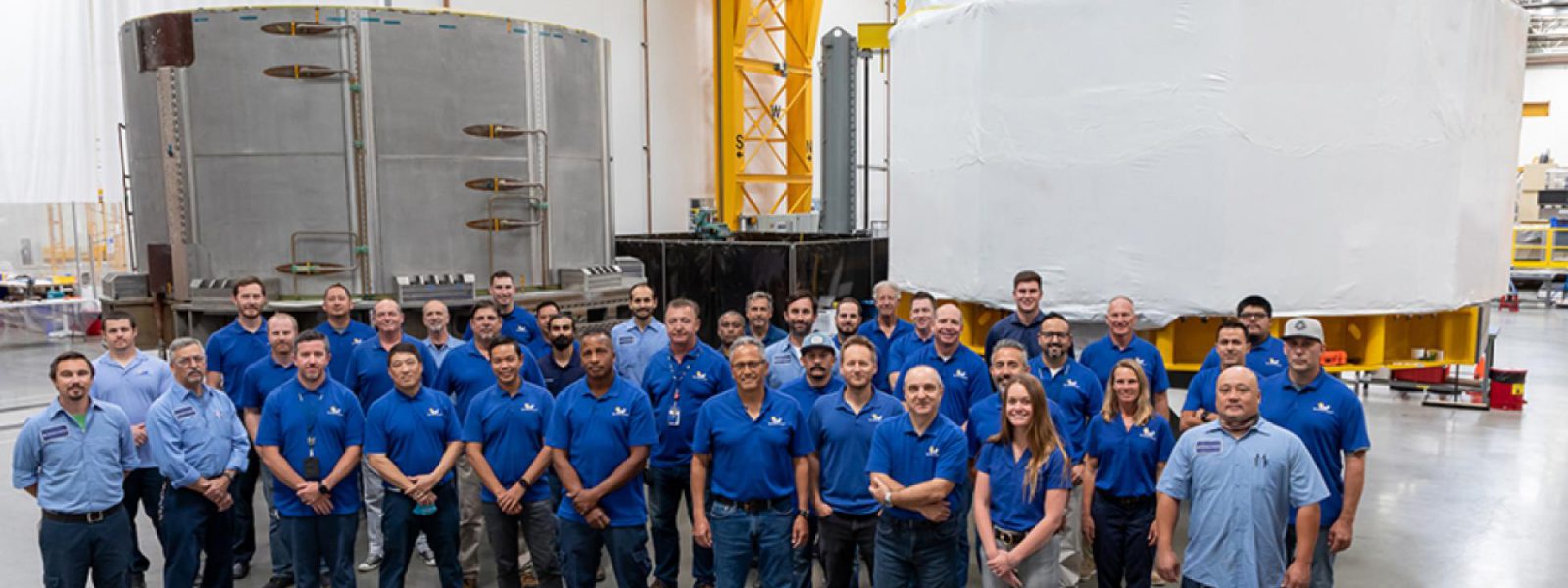The first of six superconducting magnet modules for the ITER central solenoid left General Atomics’ Magnet Technologies Center in Poway, California for the ITER site in France. The second module will depart later this summer. The international ITER fusion facility under construction in France has already begun initial tokamak assembly activities; the central solenoid is expected to be installed in 2023.
US ITER, managed by Oak Ridge National Laboratory, oversees the entire fabrication process of the central solenoid at General Atomics and other vendors. Earlier this year, the first module successfully completed rigorous post-production testing that simulated the ITER operational environment, with cryogenic temperatures of 4.5 degrees Kelvin and powering to 40,000 amperes.
“The manufacture of the central solenoid is a great example of national laboratories and research centers coming together with industry to solve challenging engineering problems,” said Kathy McCarthy, US ITER Project Director and Associate Laboratory Director for Fusion and Fission Energy and Science at Oak Ridge National Laboratory. “The experience we’re gaining from ITER in integrated, reactor-scale engineering is invaluable for realizing a viable, practical path to fusion energy.”
The 5-story tall, 1,000-ton magnet will induce 15 million amperes of electrical current in ITER’s plasma to initiate each plasma pulse and to provide vertical stability of the plasma within the tokamak. To accomplish this, the central solenoid will reach a magnetic field strength of 13 Tesla, about 280,000 times stronger than the earth’s magnetic field. Each module of the central solenoid is 7 feet tall, 14 feet wide, and composed of 3.5 miles of superconducting cable provided by ITER Japan. ITER will demonstrate industrial-scale fusion power and a self-heated, or burning plasma. Self-heating is considered an essential step for fusion energy development.
Multiple engineering and manufacturing challenges were resolved by the US ITER, General Atomics and ITER Organization team to achieve success. Module fabrication requires precise alignment to 1 mm as the conductor is wound to the necessary diameter and height. At one stage in the manufacturing process, the conductor is unwound like a giant Slinky for insulation wrapping and then reassembled back to the same precise winding alignment. To cool the magnet to superconducting temperatures, helium flows via welded inlets and outlets into multiple locations in the module. The team needed a welding method that would survive cyclic fatigue stresses for 60,000 cycles; robotic ultrasonic peening of finished welds was the best solution for the challenge.
ITER is a partnership composed of the European Union (plus the United Kingdom and Switzerland), China, India, Japan, Korea, Russia and the United States. Each partner contributes in-kind hardware to support their share of project construction while sharing all of the science and technology. As a result, most US ITER funding remains in the United States to support the design and fabrication of fusion hardware systems that will be installed in the ITER facility. So far, more than $1.2 billion has been awarded to U.S. industry, universities and national laboratories in 46 states plus D.C.
UT-Battelle LLC manages Oak Ridge National Laboratory for DOE’s Office of Science, the single largest supporter of basic research in the physical sciences in the United States. DOE’s Office of Science is working to address some of the most pressing challenges of our time. For more information, visit https://energy.gov/science.
